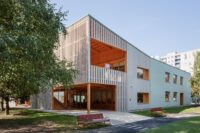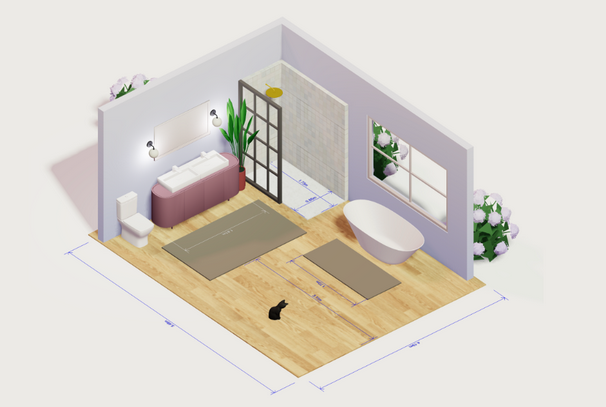- Home
- Articles
- Architectural Portfolio
- Architectral Presentation
- Inspirational Stories
- Architecture News
- Visualization
- BIM Industry
- Facade Design
- Parametric Design
- Career
- Landscape Architecture
- Construction
- Artificial Intelligence
- Sketching
- Design Softwares
- Diagrams
- Writing
- Architectural Tips
- Sustainability
- Courses
- Concept
- Technology
- History & Heritage
- Future of Architecture
- Guides & How-To
- Art & Culture
- Projects
- Interior Design
- Competitions
- Jobs
- Store
- Tools
- More
- Home
- Articles
- Architectural Portfolio
- Architectral Presentation
- Inspirational Stories
- Architecture News
- Visualization
- BIM Industry
- Facade Design
- Parametric Design
- Career
- Landscape Architecture
- Construction
- Artificial Intelligence
- Sketching
- Design Softwares
- Diagrams
- Writing
- Architectural Tips
- Sustainability
- Courses
- Concept
- Technology
- History & Heritage
- Future of Architecture
- Guides & How-To
- Art & Culture
- Projects
- Interior Design
- Competitions
- Jobs
- Store
- Tools
- More
Architecture vs Design: Key Differences and How They Work Together for Better Spaces
Discover the key differences between architecture and design in shaping spaces and objects. This article explores how architecture prioritizes structure and functionality, while design enhances aesthetics and user experience. Learn how their collaboration creates cohesive, successful projects, blending form and function to deliver visually appealing and functional results.

When we think about creating something extraordinary, architecture and design often come to mind. These two concepts might seem interchangeable, but they’re distinct disciplines that shape the spaces and objects around us. While architecture focuses on structure and functionality, design dives into aesthetics and user experience. Together, they form the foundation of innovation and creativity.
Understanding the difference between architecture and design helps us appreciate their unique roles. Whether we’re constructing a building or crafting a product, the balance between these elements determines the success of any project. So, how do they complement each other, and where do they diverge? Let’s explore this fascinating relationship and uncover what sets them apart.

Table of Contents
ToggleUnderstanding Architecture And Design
Architecture and design are interconnected disciplines that shape the environments we inhabit. By examining their definitions, we can uncover their distinct purposes and contributions.

Defining Architecture
Architecture governs the planning, design, and construction of buildings and structures. It prioritizes functionality, durability, and spatial harmony. For example, architectural plans integrate factors like structural integrity, environmental sustainability, and zoning regulations. Architects employ technical knowledge, mathematical precision, and creative problem-solving to design spaces fit for human needs and long-term use.
Defining Design
Design emphasizes visual appeal and user interaction across various mediums. It focuses on form, color, texture, and usability to enhance objects, spaces, or systems. For instance, interior design ensures comfort and atmosphere by combining elements like lighting, furniture placement, and décor. Designers adapt creative skills and user-oriented strategies to address aesthetics and functionality simultaneously.
Key Differences Between Architecture And Design
Architecture and design address different aspects of creating spaces and objects. Recognizing their distinctions helps us understand their complementary roles.

Purpose And Functionality
Architecture prioritizes structural integrity and practicality, ensuring spaces meet safety standards and human needs. It focuses on long-term usability, integrating systems like ventilation, electrical layouts, and zoning requirements. Design centers on enhancing user interaction and aesthetic appeal, tailoring elements like form, color, and texture to create a visually cohesive experience that resonates emotionally with users.
Scale And Scope
Architectural projects typically operate on a larger scale, encompassing entire buildings, urban planning, or infrastructural systems. These projects require detailed technical analysis and broad coordination. Design works within a smaller scope, often addressing individual components or specialized areas, such as interior arrangements or product styling, within the architectural framework.
Process And Methodology
Architectural processes involve feasibility studies, site analysis, and compliance with regulatory frameworks, transitioning through stages like conceptualization, drafting, and construction. Designers adopt an iterative approach, refining prototypes or mockups based on feedback. Collaboration is integral, with architects and designers synergizing their methodologies to align structural goals with aesthetic vision.
How Architecture And Design Work Together
Architecture and design combine to create functional and visually appealing spaces. Their collaboration ensures that both structural integrity and aesthetic goals align effectively.

Collaboration In Projects
Strong collaboration in projects bridges technical expertise and creative vision. Architects handle the structural framework, ensuring safety and functionality, while designers shape the aesthetic elements, prioritizing the user’s experience. For example, architects might determine the placement of load-bearing walls, and designers might refine interior layouts and material choices to enhance flow and ambiance. Clear communication ensures each discipline supports the other’s objectives, producing cohesive results.
Examples Of Integration
Examples of integration demonstrate how architecture and design complement each other. In residential homes, architects focus on spatial planning and structural stability, while designers select finishes and furniture, adding personality. In corporate offices, architects create open layouts for efficiency, and designers define spaces with furniture and lighting to boost productivity. Iconic buildings like the Guggenheim Museum highlight this synergy, where architectural form blends seamlessly with internal design to deliver a holistic experience.
Challenges In Distinguishing Architecture From Design
Separating architecture from design often presents challenges due to their interconnected nature. Overlapping tasks and widespread misconceptions compound the difficulty, making it essential to clarify their boundaries.

Overlapping Roles And Responsibilities
Architecture and design frequently share tasks, especially in project development. Both fields influence spatial planning, material selection, and the integration of functional and aesthetic elements. For example, architects might suggest interior layouts to optimize structural flow, while designers might adjust these layouts to enhance user interaction or comfort. This overlap can blur distinct roles, especially in smaller projects where professionals take multidisciplinary approaches.
Technology also contributes to overlap. Architectural software like AutoCAD or Revit is used by both architects for structural drawings and designers for visualizing interiors. This shared toolset reinforces the perception of role convergence, despite differing objectives and methodologies.
Misconceptions And Common Confusions
Misunderstandings about roles persist, partly due to mislabeling and public perceptions. Many assume architecture solely involves design, given that both contribute to the visual outcome of a project. This oversimplification overlooks architecture’s focus on structural integrity and compliance with regulations. For instance, people might attribute a building’s facade solely to design choices, despite architects’ structural contributions.
Terminology also adds to the confusion. Terms like “architectural design” suggest a hybridized role, making distinctions less apparent. Additionally, media representations often fail to highlight the specific expertise of each discipline, further amplifying misconceptions among non-professionals.
Importance Of Recognizing The Distinction
Understanding the difference between architecture and design ensures effective collaboration and enhances the success of creative and structural projects. Each discipline carries unique responsibilities and contributions that, when clearly defined, lead to better outcomes.

Impact On Planning And Execution
Clarifying the roles of architecture and design streamlines planning and execution processes. Architecture focuses on structural feasibility, compliance with building codes, and space optimization. This ensures projects meet safety, durability, and practical requirements. Design, on the other hand, refines the user experience through layout, color schemes, and material choices, ensuring spaces are visually cohesive and functional. When the distinction is recognized, teams can allocate tasks appropriately, preventing delays caused by overlapping responsibilities or misaligned goals.
Benefits For Teams And Projects
Recognizing these distinctions fosters better collaboration across teams, improving communication and task alignment. Architects can concentrate on technical aspects like load-bearing analysis and environmental integration. Designers can focus on user-centric details, such as furniture arrangement and lighting design. This clear division reduces errors, enhances creativity, and ensures projects stay within budget and timelines. Defining roles also promotes accountability, motivating professionals to excel within their areas of expertise.
Conclusion
Architecture and design serve distinct yet interconnected purposes, each playing a crucial role in shaping spaces and experiences. Architecture prioritizes structural integrity, safety, and functionality, ensuring spaces meet practical requirements. Design enhances aesthetic value and usability, focusing on the visual and interactive elements that engage users.
Differences in scale and methodology underscore their unique contributions. Architects often work on larger frameworks like buildings or cities, whereas designers address individual components like interiors, furniture, or visual elements. Despite these distinctions, collaboration between the two disciplines is essential. This synergy achieves projects that are both structurally sound and visually compelling.
Recognizing the distinct roles of architecture and design aids in refining workflows and aligning team efforts. Architects can prioritize technical solutions, while designers focus on refining user experiences. By understanding these differences, we can foster better partnerships, reduce inefficiencies, and deliver successful outcomes tailored to both functional and design needs.
- and design impact on architecture
- architect vs designer roles
- architectural and design solutions
- architectural design collaboration
- architectural design cooperation
- architectural design principles
- architecture and design concepts
- architecture and design integration
- architecture and design synergy
- architecture and design teamwork
- architecture and interior design
- Architecture vs design
- architecture vs design projects
- better spaces through design
- collaborative architecture and design
- design and architecture firms
- design in architectural spaces
- design process in architecture
- design strategies in architecture
- designing better architectural spaces
- differences between architecture and design
- impact of design on architecture
- integrated architecture and design
Submit your architectural projects
Follow these steps for submission your project. Submission FormLatest Posts
10 Best Architecture Tools of 2026: Programs, AI, and iPad Apps
A comprehensive guide to the most influential architecture tools and AI platforms...
Best Architectural Software for Students in 2025
In 2025, digital tools aren’t just convenient — they’re essential to learning,...
Beginner’s Guide to Arcadium 3D: Your First Room Design in 5 Easy Steps
Designing a room used to mean wrestling with tape measures, mood boards,...
Architectural Design Software Tools for Student Design
Many architecture students want fast ways to explore ideas. Some of them...












Leave a comment